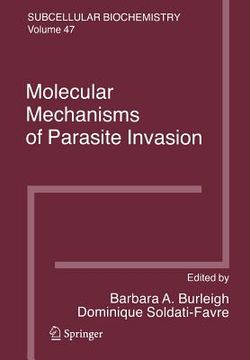Share
molecular mechanisms of parasite invasion (in English)
Barbara A. Burleigh
(Illustrated by)
·
Dominique Soldati
(Illustrated by)
·
Springer
· Paperback
molecular mechanisms of parasite invasion (in English) - Burleigh, Barbara A. ; Soldati, Dominique
$ 161.04
$ 169.99
You save: $ 8.95
Choose the list to add your product or create one New List
✓ Product added successfully to the Wishlist.
Go to My WishlistsIt will be shipped from our warehouse between
Tuesday, May 28 and
Wednesday, May 29.
You will receive it anywhere in United States between 1 and 3 business days after shipment.
Synopsis "molecular mechanisms of parasite invasion (in English)"
In biological terms, a parasite can be defined as "an organism that grows, feeds and is sheltered on, or in, a different organism while contributing nothing to the survival of the host."1 This relationship is particularly intimate for parasitic protozoa (and single-celled fungi such as the Microsporidia), many of which not only penetrate tissue barriers, but gain entry into host cells. The entry mechanisms are as diverse as the organisms employing them and are often critical components of their pathogenic profile. All of the parasitic organisms highlighted in this new book represent medically important human pathogens that contribute significantly to the global burden of disease. As such there is intense interest in understanding the molecular basis of infection by these pathogens--not only with regard to their clinical relevance but also the fascinating biology they reveal. For most of the parasites discussed here (Plasmodium falciparum, Toxoplasma gondii, Cryptosporidium parvum, Trypanosoma cruzi and Leishmania spp.) the ability to penetrate biological barriers and/or to establish intracellular residence is critical to survival of the pathogen in the mammalian hosts. For other parasites, such as Entamoeba, a tissue invasive phenotype is a key virulence determinant. In the ensuing 18 chapters, select members of this diverse set of protozoan parasites, as well as some examples of the extremely reduced fungal parasites classified as Microsporidia, are discussed within the context of the fascinating molecular strategies employed by these organisms to migrate across biological barriers and to establish residence within target host cells.
- 0% (0)
- 0% (0)
- 0% (0)
- 0% (0)
- 0% (0)
All books in our catalog are Original.
The book is written in English.
The binding of this edition is Paperback.
✓ Producto agregado correctamente al carro, Ir a Pagar.

